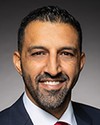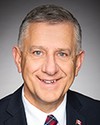In the corporate plans of the company and of CDEV, you'll see the structure, but TMP Finance basically is a funding corporation into Trans Mountain Corp. It was a provider of debt and equity funds for the original acquisition and for construction up until the time that the company began to borrow from external banks to pay for the project.
Evidence of meeting #110 for Natural Resources in the 44th Parliament, 1st session. (The original version is on Parliament’s site, as are the minutes.) The winning word was project.
A video is available from Parliament.



